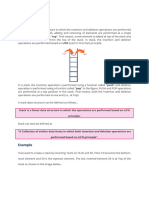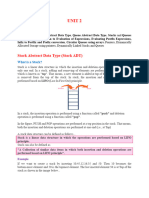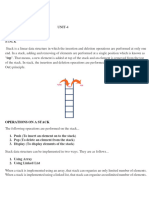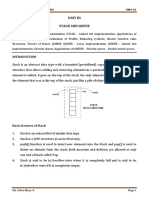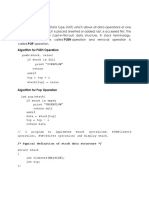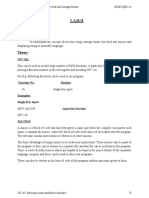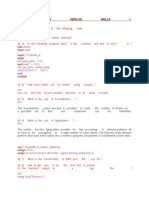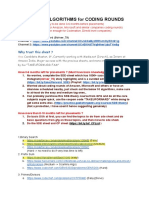0% found this document useful (0 votes)
239 views10 pagesStack ADT: What Is A Stack?
A stack is a linear data structure that follows the LIFO (last in, first out) principle for inserting and removing items. Items can only be inserted to or removed from one end, called the top. When inserting an item, it is added to the top of the stack. When removing an item, it is removed from the top of the stack. A stack can be implemented using either an array or linked list. With an array, the size must be fixed ahead of time, while a linked list allows the stack to grow dynamically. Common stack operations include push to insert, pop to remove, and display to output the items.
Uploaded by
abhishekCopyright
© © All Rights Reserved
We take content rights seriously. If you suspect this is your content, claim it here.
Available Formats
Download as PDF, TXT or read online on Scribd
0% found this document useful (0 votes)
239 views10 pagesStack ADT: What Is A Stack?
A stack is a linear data structure that follows the LIFO (last in, first out) principle for inserting and removing items. Items can only be inserted to or removed from one end, called the top. When inserting an item, it is added to the top of the stack. When removing an item, it is removed from the top of the stack. A stack can be implemented using either an array or linked list. With an array, the size must be fixed ahead of time, while a linked list allows the stack to grow dynamically. Common stack operations include push to insert, pop to remove, and display to output the items.
Uploaded by
abhishekCopyright
© © All Rights Reserved
We take content rights seriously. If you suspect this is your content, claim it here.
Available Formats
Download as PDF, TXT or read online on Scribd
/ 10
